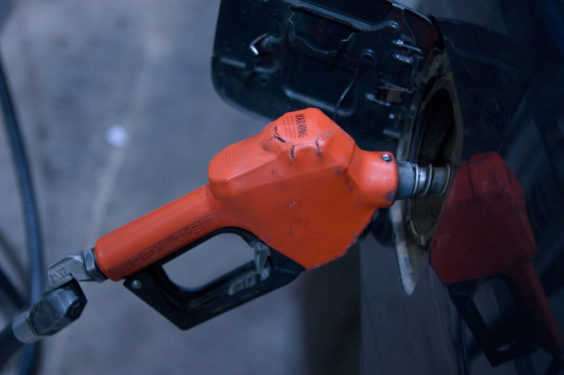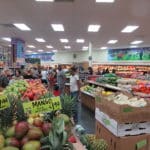
Planning any road trips this summer? As Memorial Day unofficially kicks off the season today, grocery stores are battling for your business, by making it cheaper to fill up your gas tank.
Wouldn’t it be nice if they’d just make it cheaper to fill up your shopping cart? You know, with stuff you can eat?
Lots of grocery stores offer gas rewards programs, allowing you to earn points that can be redeemed for discounts on gas. This summer, it seems they’re all trying to outdo each other in making their rewards programs even more rewarding. Kroger, for example, is offering twice the fuel points every weekend through the end of June, if you download a digital coupon from the Kroger website (or cut it out from the weekly ad, if you’re not digitally inclined). Meanwhile, a gas price war of sorts is taking place in Pittsburgh, where both Giant Eagle and Shop ‘n Save are offering double gas rewards through Wednesday.
The gas rewards game has gotten so competitive, that Shop ‘n Save supplier Supervalu has sued Sunoco for entering into a similar agreement with Walmart. Supervalu claims Sunoco violated an exclusivity deal by partnering with both Shop ‘n Save and Pittsburgh-area Walmart stores to offer discounts at the pump.
But some are wondering whether grocery-supplied gas discounts are really all they’re cracked up to be.
Loyalty program expert Brian Woolf points out that you may simply be paying more for groceries, in order to save on gas. “Unless a retailer has its own chain of gas stations to help offset the discount cost,” he writes in a recent column, the cost “must be offset by increased store sales, increased grocery prices and/or retail cost savings.”
Using the most common gas program calculation, of 5 cents off per gallon for every $50 spent on groceries, you don’t end up saving a whole lot either. If the average customer buys 15 gallons of gas at a time, they end up saving only 75 cents for every $50 they spend on groceries. That savings can get even smaller if your store partners with a gas station that has higher prices, and you end up paying more for gas in order to save a little. And the cost to the grocery store for offering the program can be even less. If you assume that perhaps only half the customers actually redeem their rewards before they expire, the grocery store is out only around 38 cents for every $50 spent in its stores. Not a bad deal – for the grocery store.
For those stores that offer fuel points for buying particular items, rather than basing it on the overall amount of money you spend, those perks are likely coming at the expense of lower grocery prices. Assume a peanut butter vendor offers a grocery store a deal on the wholesale price of its product, Woolf argues. The store could pass along the savings in the form of a sale – or keep the peanut butter at regular price and offer a fuel reward on the product instead. The savings may even out for the customer who ends up taking advantage of the fuel reward, but it ends up being cheaper for the grocery store – some people will buy the peanut butter at full price and never get around to redeeming their fuel reward.
So what appears to be just an okay deal for shoppers, can turn out to be a great deal for grocery stores. They get to advertise big cost savings on a big-ticket item like gas, knowing that many customers enticed by the offer won’t end up taking advantage of the program at all. Besides, not everyone will buy what’s on sale at a grocery store on any given week, but just about everyone needs to buy gas. It’s a “sale” that appeals to everyone. And the more that gas costs, the better. “Higher gas prices are almost like free advertising for these types of programs,” supermarket analyst David Livingston told the Washington Post.
Some grocery stores, though, have decided to end the madness and get out of the gas rewards game altogether. Last month, Minnesota’s Rainbow Foods ended its Fuelperks program and replaced it with “Fresh Perks”, a discount offer on groceries. Between now and July 20, customers will get 1% cash back if their total purchases during that time exceed $400. It may not sound like much. But Rainbow says it’s about the same amount of savings its Fuelperks program offered. A spokesperson claimed the average fillup was 10 gallons, representing a 1% percent savings – the same as the Fresh Perks program. Some disgruntled customers complained that they bought much more than 10 gallons at a time, and saved more that way. But others are happy to get a discount they can redeem at the store instead of at a gas station.
Of course, that 1% cash back reward can only be redeemed during a two-week period, from July 21-August 3. If you happen to be out of town, or just plain forget to go grocery shopping and redeem your reward during those dog days of summer, you don’t get any discount at all. And the potential saving goes right back into Rainbow Foods’ pocket.
Any discount on gas, or groceries, is nice – but don’t be seduced by a gimmick that you won’t take advantage of. Otherwise, you may end up being the one who’s taken advantage of.















